Residency Curriculum Course: Golf Injuries: Prevention and Management
Course Description
This 3-monograph series will educate the registrant on the kinesiology of the golf swing, injury prevention strategies, and comprehensive rehabilitation program design. The authors have exceptional backgrounds and experiences in treating the golf athlete. Each monograph is designed for the registrant to be able to immediately apply the content to patient care. In addition to the written work, one author has created a library of video clips showing numerous exercises that can be used at various stages of rehabilitation.
Course Objectives
- Cite the incidence and prevalence of common injuries of the golfer.
- Identify the postures, mechanics, and pathomechanics associated with the golf swing.
- Identify common golf injuries according to etiology and body region.
- Develop intervention strategies to minimize golf injuries. Identify key elements during each phase of the golf swing motion, including grip, address, backswing, downswing, impact, and follow through.
- Identify the kinematic requirements of the critical body segments during each phase of the golf swing.
- Identify at least 3 examples of different swing styles based on differing body types.
- Identify and differentiate between efficient and faulty swing characteristics.
- Describe how the stretch-shorten cycle and ground reaction forces contribute to maximum club head speed at impact.
- Describe which phases of the golf swing motion increase the torsion, compression, and shear in the lumbar spine.
- Identify stress potentials in the upper and lower extremities during the golf swing.
- Apply knowledge of the golf swing to assist in designing rehabilitation programs and improving performance.
- Apply evidence-based strength and conditioning concepts to assist golf athletes of all skill levels with injury prevention and improved golf performance.
- Appreciate the role of the neuromuscular system in generating an optimal golf swing.
- Explain general timelines, precautions, and contraindications for safely returning to golf.
- Apply clinical screening tools for functional analysis of the golfer and assist in developing injury prevention programs and proper golf warm-up routines.
Authors and Topics
- Kinesiology and Biomechanics of the Golf Swing
Ada Wells, MPT, PMA®-CPT, TPI-Level 3 Medical - Strength & Conditioning for Golf Injuries
Brandon Schomberg, DPT, OCS, SCS, CSCS, CGFI-MP3 - Common Golf Injuries
Steven Pavlet, PT, DPT, MS, OCS, ATC
